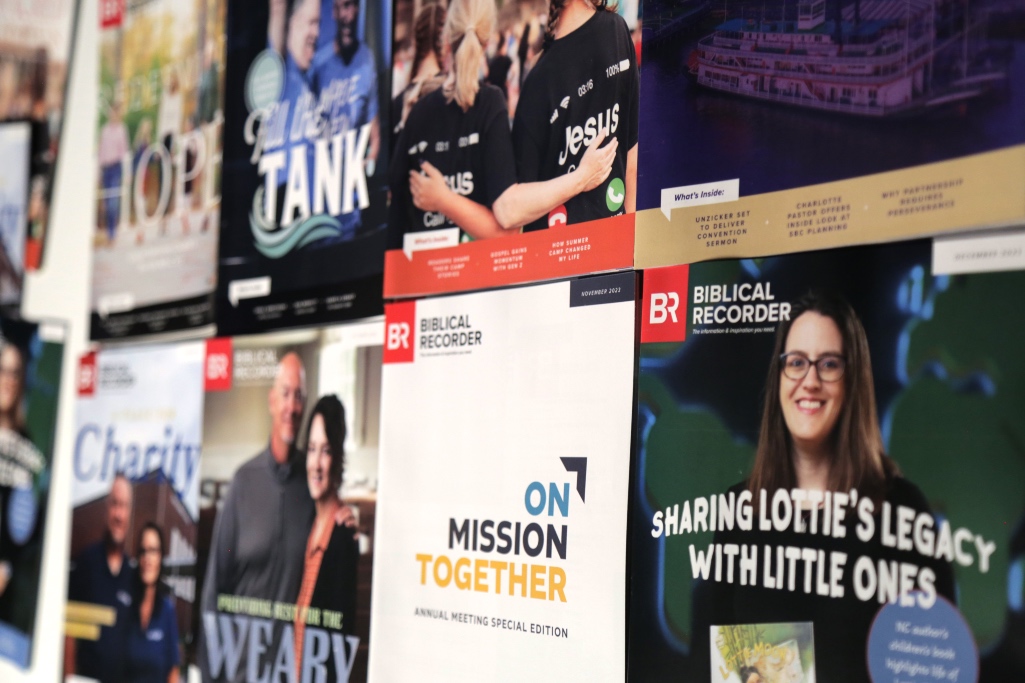Numbers are a necessary part of life. We count the years of our life, the months of a pregnancy, the money in our bank account, the miles we drive, the points on the scoreboard, the votes a candidate receives, and reluctantly, the pounds on the scales. Time is measured in numbers. Our bank account and social security are identified with numbers. Numbers are an essential form of communication. They tell us something.
Numbers are a source of sensitivity for some. When churches count baptisms, attendance and offerings, someone will rise up in offense, complaining that numbers are “not spiritual.”
Thom Rainer, president and CEO of LifeWay Christian Resources, has a blog that not only offers his perspective on issues, but also provides useful facts within Southern Baptist life. In a recent blog post he shared an interesting list of all Southern Baptist (SBC) churches who reported 1,000 or more in worship attendance.
Rainer made it clear that his purpose is simply to inform, not to make qualitative comments or judgments. All of the numbers are self-reported by the churches. Some of those numbers are precise; some churches use estimated figures. If a church does not report, it is not on this list.
With approximately 46,000 SBC churches, only 1.3 percent of the churches report more than 1,000 in attendance, according to Rainer. That translates into 98.7 percent of the churches reporting their attendance under 1,000.
The trend shows people moving toward larger churches. In another blog Rainer called the concentration of people to larger churches “a clear and present reality.” He reported that while only 1.3 percent of churches report an attendance of 1,000 or more, 22.2 percent of the total denominational attendance is in these congregations.
Only 4.4 percent of the churches have an attendance of 500 or more, but 35.3 percent of the attendance of 46,000 churches is concentrated in just those few churches.
We have extracted the North Carolina churches from the national list and provided them on this page. There are 36 SBC churches in N.C. that reported 1,000 or more in attendance.
The numbers are what they are. Some comments by readers on Rainer’s blog revealed an unnecessary defensiveness as though the statistics are an attack on churches who do not show up in the list. It is unnecessary to criticize Rainer for giving us the facts.
For the record, surely we understand that this list does not express a value judgment of any church’s spiritual temperature. The list does not express the superiority of one church over another. It is a list of numbers. Every number represents people for whom Christ died. Every number represents someone who is hearing the gospel in a Baptist congregation.
Attendance figures are not the total picture of a church. It would be interesting to know how many of these churches lead the way in church planting and disciple making. What is the giving record of the largest churches – to Cooperative Program, Lottie Moon and Annie Armstrong mission offerings, and other mission causes? Only 9 of these 36 churches were in the top 20 churches in N.C. in Lottie Moon gifts last year. The other 11 churches who led in Lottie Moon gifts demonstrated significantly higher giving ratios.
A list of the top 50 N.C. churches in baptisms last year shows 26 churches from Rainer’s list are leading the state in baptisms as well as attendance. Conversely, 24 of the churches who lead in baptisms are not our largest churches. Their baptism ratio runs higher than the larger churches.
Some on the list of 36 have loose connections with Southern Baptists; some have strong involvement with us. Every church’s level of participation is unique by their own choice. That’s the way Baptists work.
It would be interesting if we had information on the economic and cultural diversity of our churches. Without question Baptists are very diverse and reach out to a broad spectrum of people.
Can we rejoice with the good things God is doing in every Bible believing church that strives to reach people, to make disciples and to glorify God? I hope so. I am excited to see churches of every size serving, worshiping, giving, going, teaching and reaching for God’s glory.
There is much to do to fulfill the Great Commission. Churches cannot be cloned to fit one size and one style. We need all kinds. “For as we have many members in one body, but all the members do not have the same function, so we, being many, are one body in Christ, and individually members of one another” Romans 12:4-5, NKJ.
.jpg)


